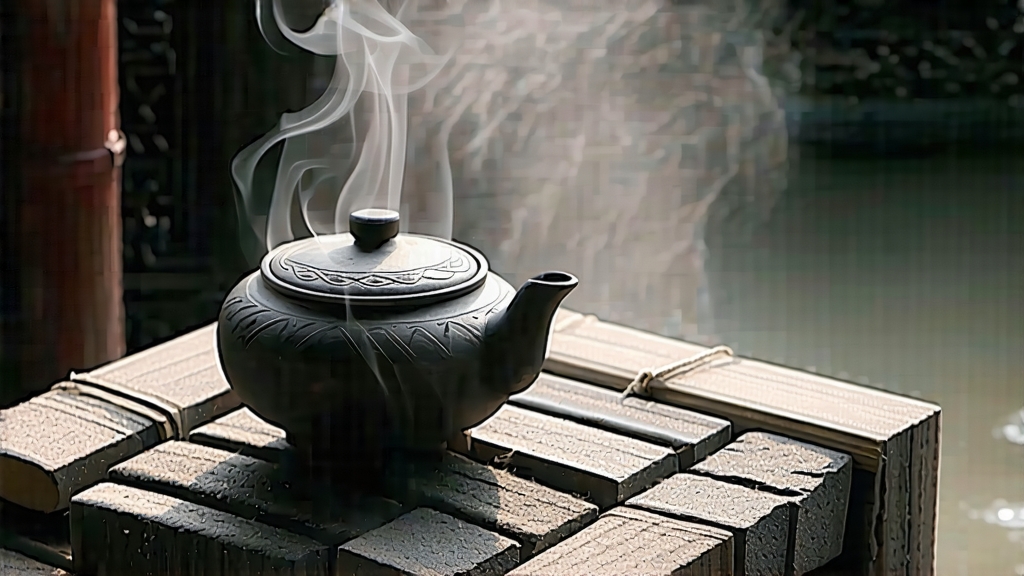
Tucked into the mist-veiled mountains of southern China’s Guangxi province, the small river town of Wuzhou guards a secret that once fueled caravans bound for Southeast Asia and cooled the throats of Malay tin miners: Liu Bao, the mellow, medicinal dark tea whose very name means “Six Forts,” a nod to the six stockades that once protected the tea mule routes. While Pu-erh has become the global shorthand for fermented tea, Liu Bao is the quiet elder—older in technique, subtler in flavor, and arguably more influential in the early maritime tea trade. To understand Liu Bao is to witness how microbes, humidity, and human patience can turn a simple leaf into a time capsule of flavor and health.
Historical footprints
Song-dynasty tax registers already list “Yao tea from Cangwu” (modern-day Wuzhou), but Liu Bao’s documented story begins in the late Ming, when the port of Guangzhou shipped “black bricks” to Hong Kong and then on to Malacca. The British East India Company’s 1840s ledgers record it as “Lieu Pau,” purchased alongside souchong as ballast for clippers returning to London. In the humid holds of sailing ships, the tea continued to ferment, arriving darker and smoother than when it left—an accidental aging that traders soon marketed as a virtue. By the early 20th century, Liu Bao dominated the kopitiam tables of Singapore and Kuala Lumpur, where Hainanese cooks boiled it with sugar and condensed milk to create the “teh” that still accompanies kaya toast. The tea’s reputation for clearing heat and grease followed Chinese migrants across oceans, embedding Liu Bao in the medicinal folklore of diaspora communities.
Micro-terroirs within one name
Today the protected geographical indication “Liu Bao” covers only the foothills where the Lian River meets the Gui, but connoisseurs distinguish three micro-terroirs. The highest, Tashan, yields leaves rich in amino acids, producing a sweet, almost jujine-like liquor. Zhongshan, at mid-elevation, gives a balanced body with hints of star anise, while the low-lying Yashan leaf is bolder, with a camphor note that lingers like old sandalwood. Each mountain’s soil is a weathered granite laterite that drains quickly, stressing the tea bushes and concentrating polyphenols. Local cultivars—Guangxi Daye, Yunqiu, and the rare purple-leaf Zixin—are broad, thick, and naturally higher in pectin, a trait that encourages the sticky “golden flowers” (Eurotium cristatum) to bloom during post-fermentation.
Crafting darkness: from kill-green to wet piling
Unlike the sun-dried rough tea (mao cha) that becomes sheng Pu-erh, Liu Bao begins with a brief shaqing: leaves are pan-fired at 160 °C for just three minutes, enough to halt oxidation but preserve leaf enzymes. After rolling and a sun-drying session on bamboo mats, the semi-finished tea is ready for its defining step—wo dui, “wet piling.” Workers sprinkle the leaf with misty river water, heap it 70 cm high inside spotlessly clean cement bays, then cover the mound with jute and rice-husks to trap heat. Over the next 25–35 days the pile is turned every five days, allowing thermophilic microbes to raise internal temperatures to 60 °C. The process is gentler and shorter than the 45-day wo dui used for shou Pu-erh, yielding a lighter fermentation that keeps Liu Bao’s signature sweet-wood character. Once the pile cools, the tea is steamed, pressed into 40 kg bamboo baskets lined with wild banana leaf, and transferred to humid caves or climate-controlled warehouses for slow aging. During the next decade the basket’s bamboo aroma migrates into the brick, while Eurotium spores speckle the surface with golden stars—an aesthetic and biochemical signature prized by collectors.
The language of vintages
Liu Bao is one of the few teas traded like wine. A 1950s “China Tea Company” basket recently fetched USD 28,000 at auction, its liquor the color of black cherry and the texture of light soy. Tasters describe age in five-year increments: 5-year tea shows cocoa and dried longan; 15-year develops betel nut and earthy truffle; 30-year reveals ginseng, cam